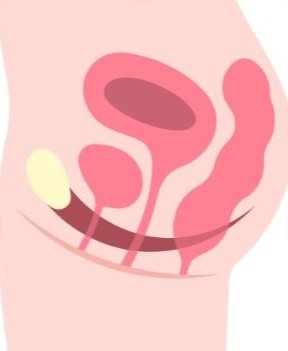5 Reasons to See a Pelvic Floor Physical Therapist Postpartum
Okay, so many of you have seen Instagram, TikTok and Facebook posts discussing the use of pelvic floor physical therapy postpartum, but WHY is it so helpful?
I’ve narrowed this list down to five reasons, but let's be real…I could think of a lot more that I haven’t covered here. Not to mention that I’ve never seen a patient postpartum that didn’t think it was worthwhile.
Reason #1: We are experts in assessing your musculoskeletal system
Most people will see their OBGYN or Midwife for a postpartum follow up to ensure proper healing of the pelvic organs, vagina, and/or abdominal tissue but did you know that those are not the only areas impacted by pregnancy and delivery? The body undergoes changes to posture, load transmission, muscle length/strength, as well as joint mobility. A pelvic floor physical therapist is able to assess all of these things to ensure you get back to doing the activities you love safely and with good body mechanics.
Reason #2: We thoroughly screen for and treat diastasis recti (aka abdominal separation)
Diastasis recti happens when the two muscle bellies of the rectus abdominis (think the 6-pack muscle) separate to make room for the belly to grow through pregnancy.
Separation of the rectus abdominis muscle bellies
Sometimes this heals on its own during the early postpartum period, but research is now showing that up to 60% of women are still experiencing diastasis recti at 6 weeks postpartum and up to 32% at 12 months postpartum (1). Abdominal separation is necessary during pregnancy, however we want to reduce this postpartum to improve the ability to translate load/force through the core. This is not only important for getting back to workouts, but also for daily activities such as lifting, carrying, rolling in bed, and preventing low back pain.
Reason #3: We build you a customized exercise program that works for YOU and will allow you to return to your goals with less risk for injury
Most patients are cleared to return to exercise at 6 weeks postpartum, but what exercises SHOULD you do at this time? I get this question all the time because our bodies change so much during pregnancy that many of the same activities we did before pregnancy may not feel the same which can lead to injuries down the road. As pelvic floor PTs we undergo additional training to understand the impact pregnancy plays on the body systems and how that will impact return to exercise. We will do a comprehensive assessment of strength, mobility, load transmission, posture, and pelvic floor function then give you exercises specific to your needs to allow you to get back to the activities you love.
Reason #4: We can treat and/or reduce your chances of developing urinary leakage and pelvic organ prolapse.
PSA - PEEING ON YOURSELF POSTPARTUM IS NOT NORMAL. Yes it is common but that doesn’t mean it can’t be fixed or prevented. A study done in 2021 showed that pelvic floor muscle training postpartum reduced reports of urinary leakage in women who were experiencing this as well as reduced symptoms of pelvic organ prolapse (2). Not only do we work to help you gain strength and coordination in the pelvic floor but we also train people in how to manage pressure and load through the abdominal cavity. This impacts the amount of pressure going into the pelvic floor thus reducing risk for prolapse and leakage!
The pelvic floor is the horizontal red structure above which supports the bladder, vagina and rectum
Reason #5: We can help you restore tissue mobility to the abdominal region and perineum.
Whether you had a cesarean delivery or vaginal birth with tearing or episiotomy, we can help! We will work to mobilize the scar itself and surrounding area and will teach you how you can continue that work between sessions.
If you are currently pregnant, newly postpartum, or years postpartum pelvic floor PT can help. Give us a call to schedule your free phone consultation at 859-215-8870.
Written by: Kelsey Karnes PT, DPT
Sperstad JB, Tennfjord MK, Hilde G, Ellström-Engh M, Bø K. Diastasis recti abdominis during pregnancy and 12 months after childbirth: prevalence, risk factors and report of lumbopelvic pain. Br J Sports Med. 2016;50(17):1092-1096. doi:10.1136/bjsports-2016-096065
Romeikienė KE, Bartkevičienė D. Pelvic-Floor Dysfunction Prevention in Prepartum and Postpartum Periods. Medicina. 2021; 57(4):387. https://doi.org/10.3390/medicina57040387


